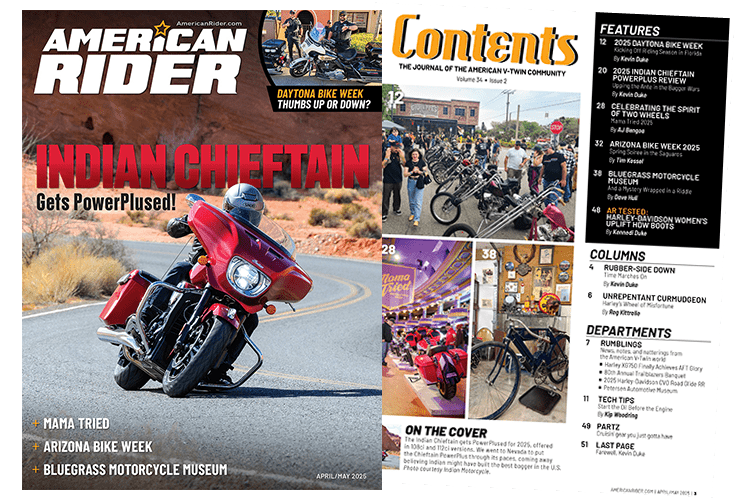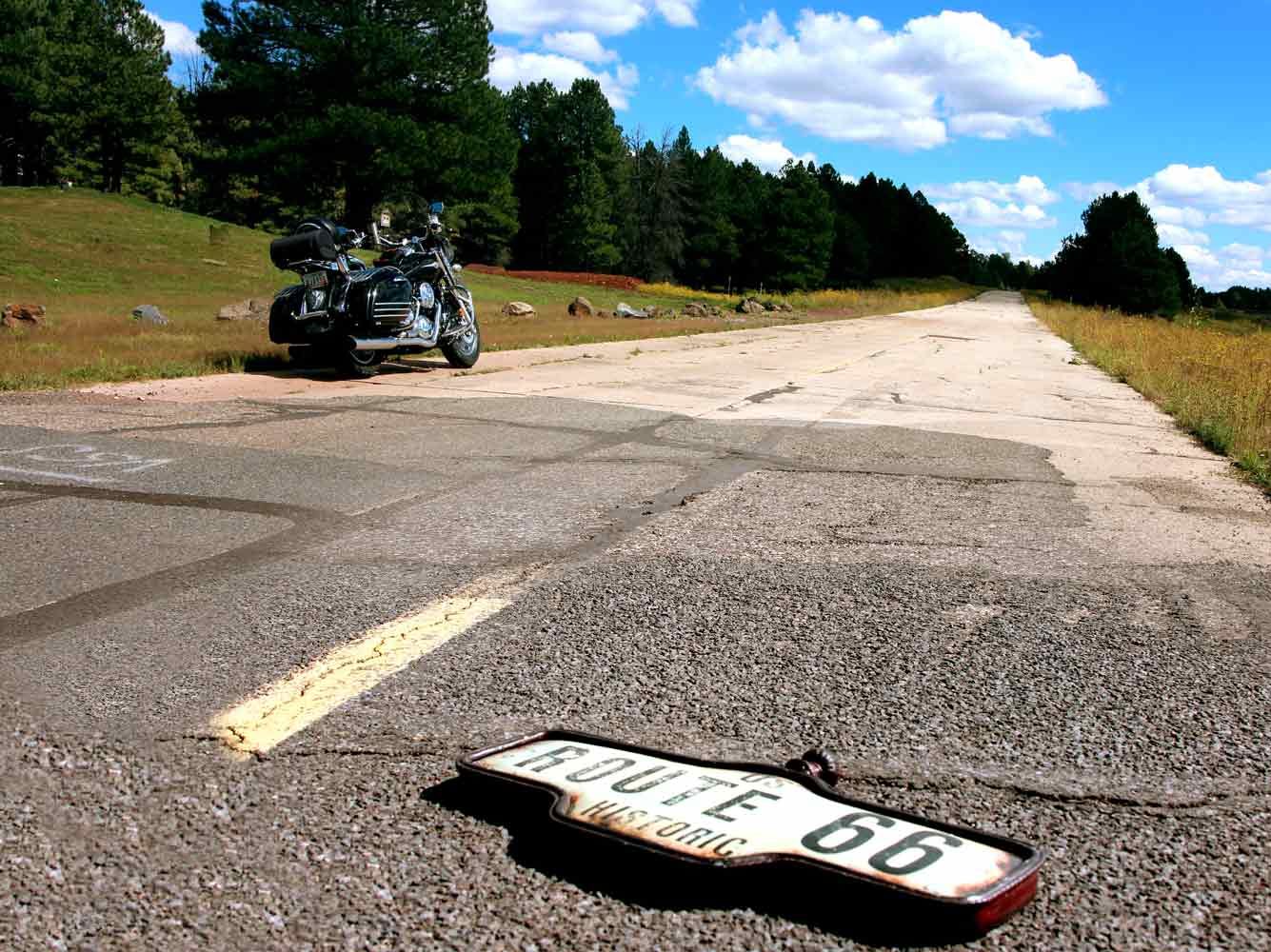The Folklore
Small towns are forgotten, their roads forlorn, disappearing in disrepair. All that remains are faded memories and fanciful folklore. The fabled Mother Road, Route 66, displays a harsher reality than the images romanticized by Hollywood.
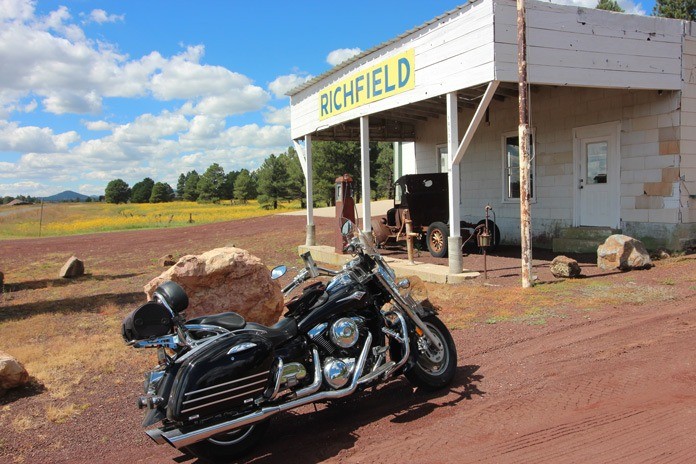
The tattered remnants of Route 66 through Bellemont, Arizona, are a naked reminder of the Okies’ escape from the Dust Bowl. Bellemont is also home to the Pine Breeze Inn (Richfield gas station), the first location shot in the movie Easy Rider. It was here the neon “Vacancy” sign switched to “No Vacancy” when Billy and Wyatt were denied a room their first night. My ride had a better ending.
Related Story: The Devil’s Highway: Get Your Kicks on Route 666!
About 60 miles west of the Pine Breeze Inn is the best-preserved stretch of the original Route 66. The state of Arizona dedicated the 156 miles of old U.S. Route 66 from Seligman to Kingman as a Historic Route, which assured the preservation of the longest undisturbed stretch of Route 66 in the United States. Here in the heart of cattle ranch country, Route 66 makes its way through Seligman, Peach Springs, Truxton, Crozier Canyon, Valentine, Hackberry, and Kingman and ends just past Oatman in Topock.
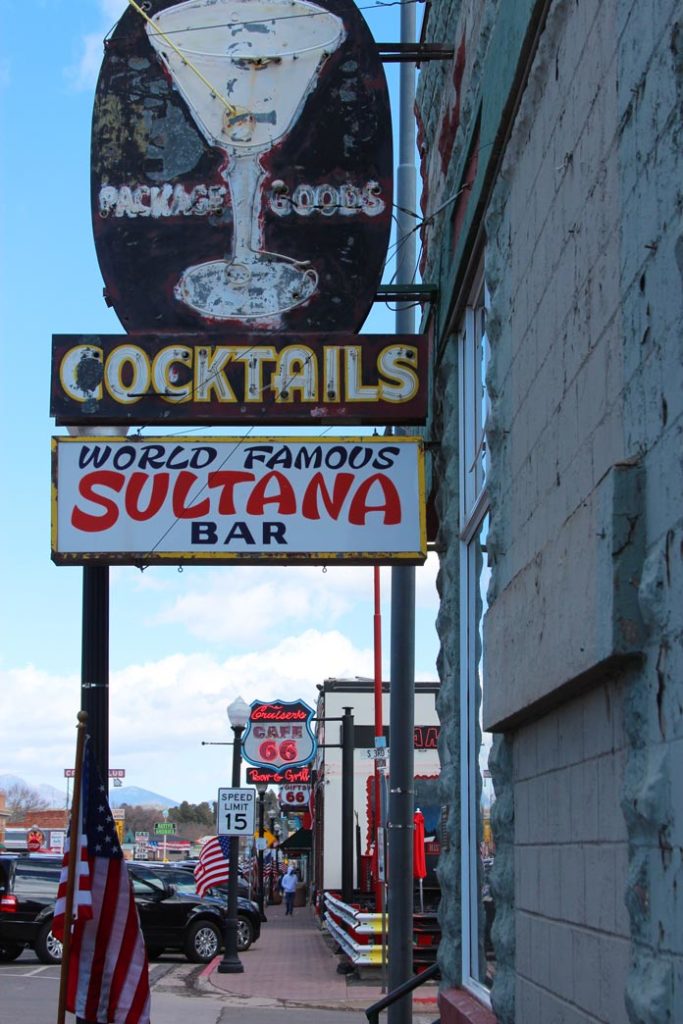
Heading west from Bellemont on Interstate 40, my first stop was Williams, also known as the “Gateway to The Grand Canyon” and home to the Grand Canyon Railway. Its trains carry more than 100,000 people a year to the “big ditch” and back. Like most tourist towns, everything is a gift shop.
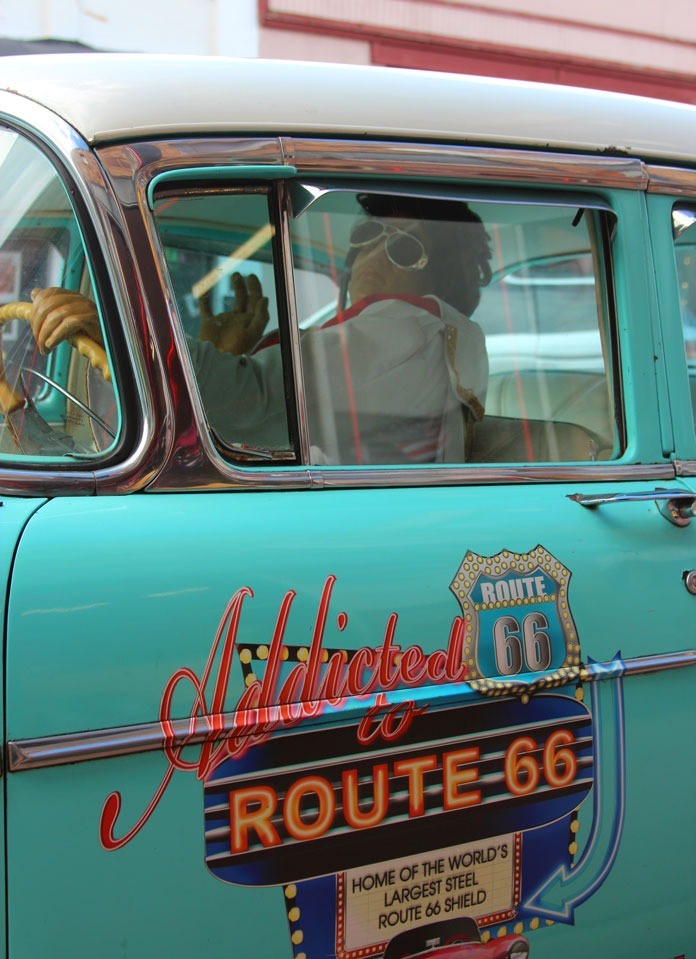
With Williams located in the crosshairs of Route 66 and the Grand Canyon, souvenir-ism here is dialed up to 11. A surreal mix of iconographic American images – from gun-toting John Wayne to guitar-wielding Elvis Presley – is recycled and resold. The same storefronts are selling so-called “Indian Jewelry” with caricature images of Native Americans pitching tacos and burritos. From a socially conscious perspective, many of us would dismiss such flaunts as cliche and passe, but throngs of foreign and U.S. visitors a year don’t seem to mind.
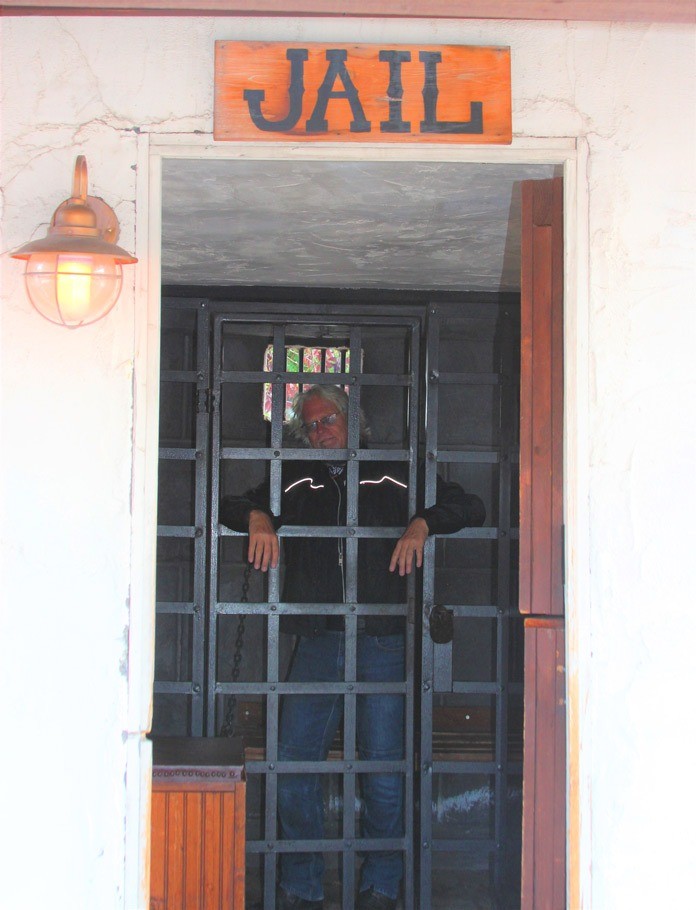
We Won’t Get Fooled Again
There is a Route 66 sign at the Ash Fork off-ramp just past Williams, but it’s only a 2-mile stretch that dead-ends to a dirt road. Ash Fork is clearly a bold attempt to capitalize on tourists exploring 66, as there is nothing noteworthy there besides a $29/night motel, which sounds unpromising.

If you stay on I-40 and get off at Seligman, this is where the Route 66 fix begins. I highly recommend lunching at the Roadkill Cafe and OK Saloon. Their motto – “You Kill It, We Grill It” – is evidenced by the vast collection of stuffed fish, fowl, and wild animals on display. You’ll need to shift gears to decode the cheeky menu, which includes Deer Delectables, Bad-Brake Steak, Fender Tenders, Caddie-Grilled Patty, Splatter Platter, Swirl of Squirrel, and Highway Hash.
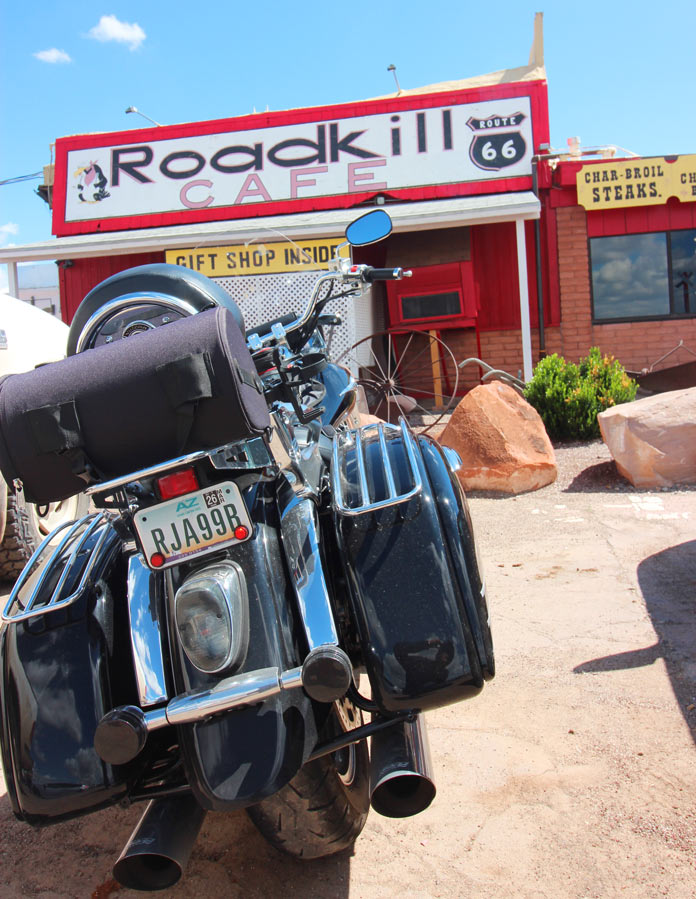
Seligman is where tour buses pour into town and spill international travelers into the streets. The “Don’t flush anything but TP down the toilets” sign posted in the cafe’s bathroom is written in seven languages.
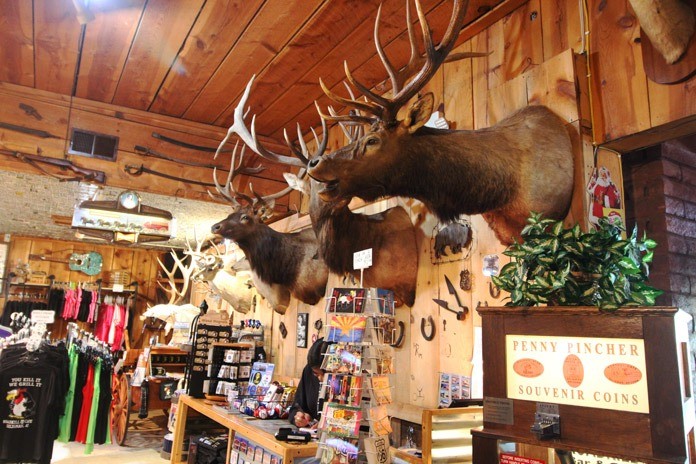
Back on 66 West, the heartbeat of Mother Road mythology truly begins. Blatant profiteering evaporates, and the experience that blooms before you is pure Americana. You can feel the real history here – the horse paths of the Havasupai, Kaibab Paiute, and Hualapai tribes, as well as the twin tracks of settler wagon trains that forged westward and railroad tracks that carried people and goods to the Pacific Coast.

The road at one time offered Dust Bowl refugees hope as they escaped the ruined farmlands of the Great Plains. Their travels through Arizona were richly detailed in John Steinbeck’s novel The Grapes of Wrath, published in 1939.
The road is fairly well-maintained. It’s a bumpy ride at speed, filled with tar snakes but no major potholes. Both sides of the road are peppered with vintage iconic “Burma Shave” road signs, their messages chopped into fragments and spread out down the road with sayings like:
It’s best for … one who hits … the bottle … to let another … use the throttle … Burma-Shave
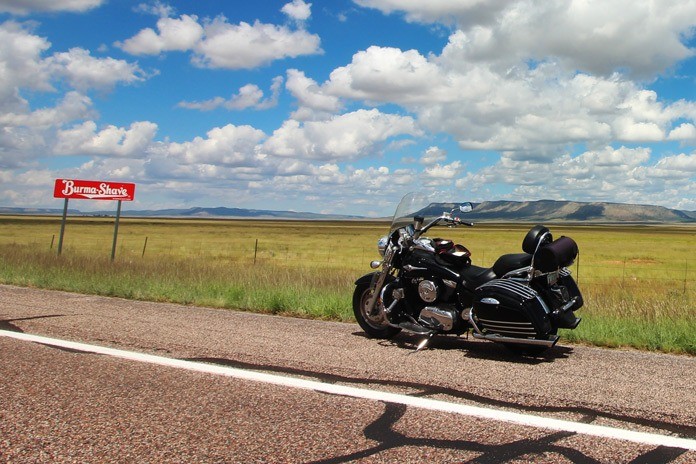
Peach Springs passes through the Hualapai Nation Reservation, which encompasses 1 million acres of land. I suggest a visit to the Hualapai Cultural Center for insight into the people who lived here long before there were railroads or Route 66 — the ones who rightfully own this land.
Peach Springs is also home to the Grand Canyon Caverns. Discovered in 1927, it is the largest dry limestone cave system in the U.S., located 210 feet below the surface. Visitors take an elevator 21 stories underground into the massive caverns, where guides lead tours through many rooms.
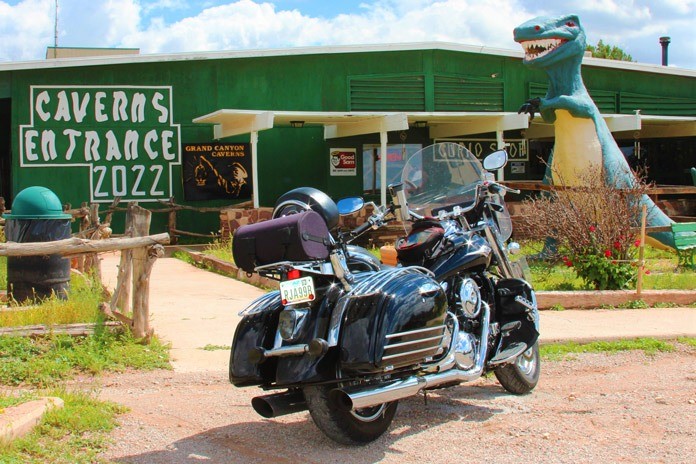
Because the caverns are so deep underground, the temperature is always 56 degrees with zero humidity. In 1962 during the Cuban Missile Crisis, the U.S. government stashed enough food and water there to support 2,000 people for up to two weeks. These supplies remain today and can be seen by visitors.
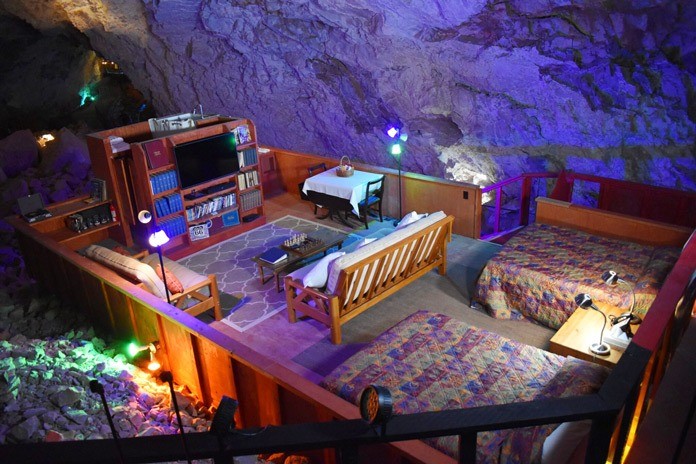
You can stay the night in the Cavern Suite for only $1,000 a night per couple. That same amount could set you up for more than a month at the aforementioned Ash Fork Inn.
The Forlorn
Truxton (pop. 85), Crozier (pop. 80), and Valentine (pop. 43) passed so quickly that I don’t recall anything there. The Hackberry General Store is a Route 66 roadside attraction. This general store generally sells only Route 66 souvenirs – no food or gas.

Why these roadside proprietors think old broken-down rusted cars are cool is beyond me. Perhaps these junkyard phenomena are a curious sight to the plethora of foreign visitors who flock here and return home with tales of a tattered America riddled with rough roads, junkyard front yards, abandoned gas stations, motels, and farms.

Eleven official Route 66 museums are littered along the 2,448 miles of the Mother Road, but there are dozens of unauthorized Route 66 museum signs nailed to barn doors along the route. And, yes, the barns are filled with rusted old cars.
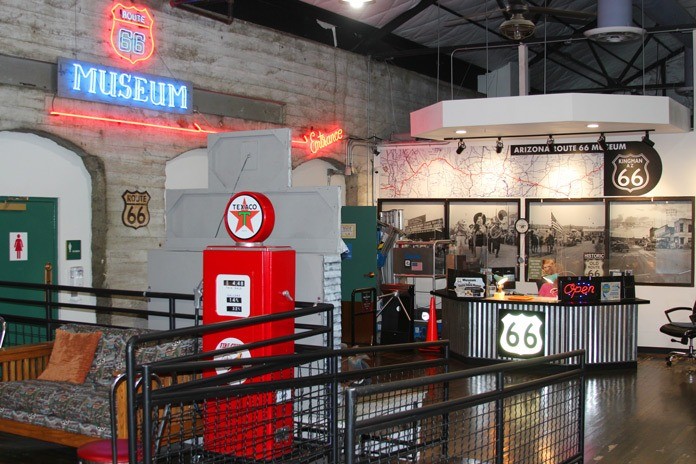
Kingman is the official end of the 156-mile route and is punctuated with what may be the finest Mother Road shrine of them all – the Arizona Route 66 Museum. A drive-thru structure built in 2021 near the historic Powerhouse Visitor Center allows visitors a great photo-op.
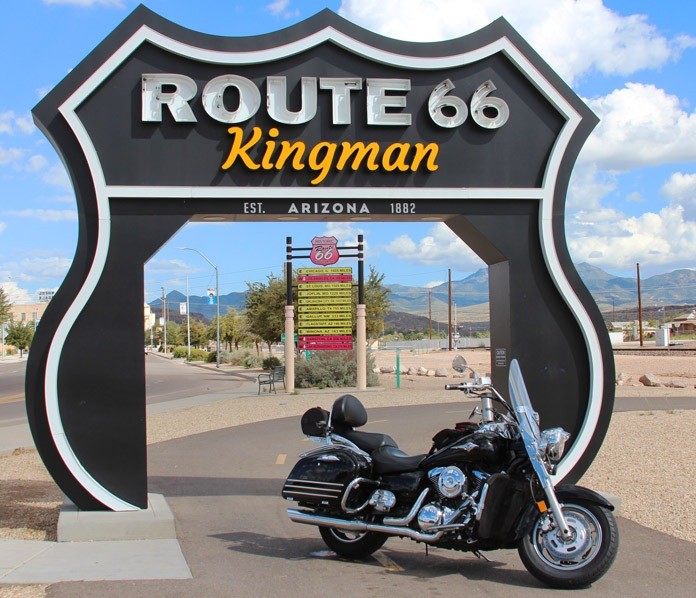
Destination Oatman
This is where the official road ends, old Route 66 begins, and the ride really gets exciting. Turn left leaving the museum onto West Historic Route 66, and then take a hard right under the parallel I-40 before turning left onto Oatman Highway. This part of Route 66 twists and turns its way up to Oatman. You’ll encounter 10-mph twisties, and the sign “Beware of Burros” is to be taken seriously. Hundreds of wild asses roam these mountains and the streets of Oatman. The views on the way here are spectacular, with only one safe turnout to grab a photo.
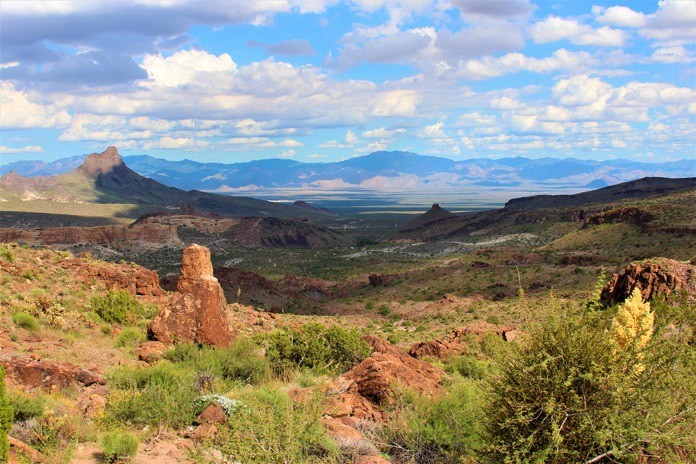
The town is named after Olive Oatman, who was captured by a Native American tribe in the Arizona Territory and later traded to the Mohave people. She spent five years with the Mohave tribe before being returned to her people and was famous for the facial tattoos she received while in captivity.
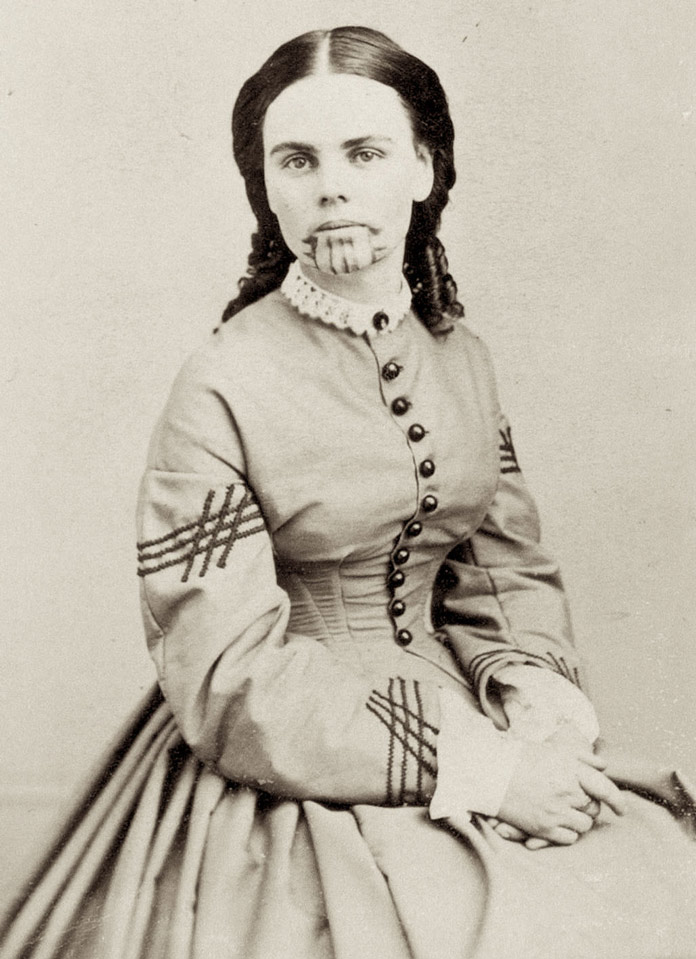
This small mining town was established in 1881. When the mines were abandoned, so were the donkeys. Oatman only survived because of its location near traffic on Route 66. Actors Clark Gable and Carole Lombard stopped there during their 1939 honeymoon. Gable fell in love with the town and returned frequently to play cards with the locals. The Oatman Hotel Restaurant & Saloon is papered wall to wall with thousands of dollar bills. The upstairs rooms are a gift shop, but the Gable-Lombard Honeymoon Suite is available to view.
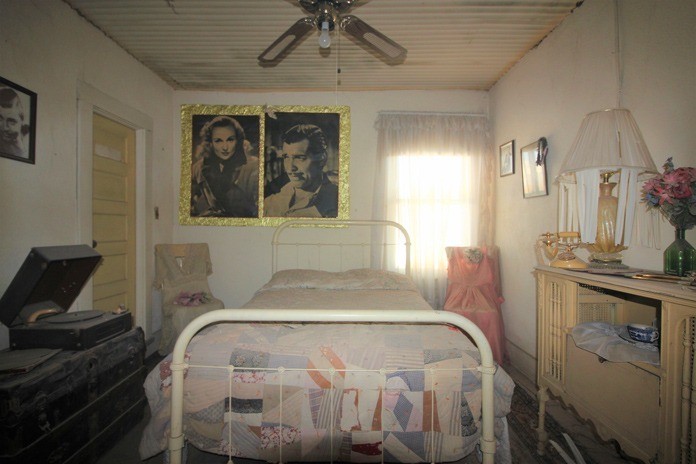
With scheduled faux gunfights at noon and 2 p.m. and wild burros roaming the streets, Oatman is the real deal, annually attracting half a million tourists. Oatman is no Hollywood set. These hotels and stores were built here in the late 1800s, and they somehow survived fires, flash floods, and gunfights. At 6 p.m., Oatman becomes a ghost town. Everything closes; there are no hotels, and you surely don’t want to get caught on the mountain roads at night dodging wild donkeys.
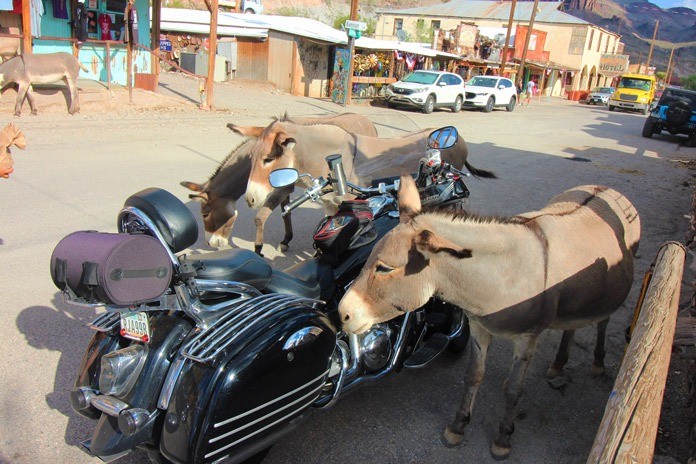
The Future
On a good year, 6 million people visit the Grand Canyon, with 40% being foreign travelers. The retailers in Oatman tell me that 80-90% of their visitors are German, Norwegian, French, and Italian. It’s a well-known fact that Europeans are the lifeblood of many tour bus, motorcycle, and car rental companies.
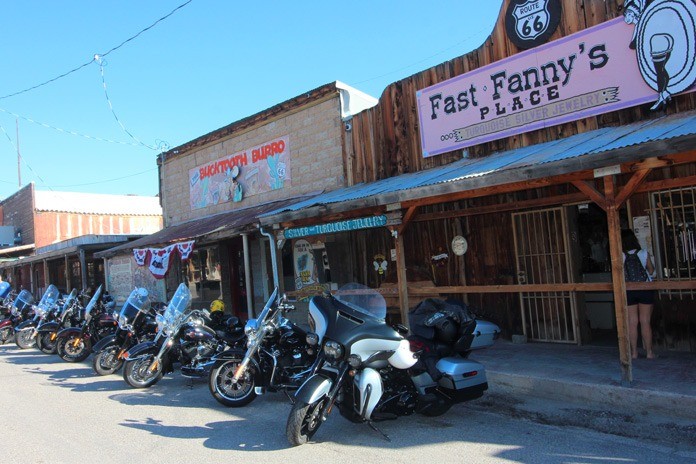
Hollywood has created a compelling narrative of freedom, individuality, and the romance of the Wild West that draws throngs of the curious to re-enact this folklore. And thankfully so, because if they stopped coming, these tiny towns would all but disappear.
I can attest to this as someone of Czechoslovakian descent riding amid a sea of Harley-Davidsons. The future includes everybody.

